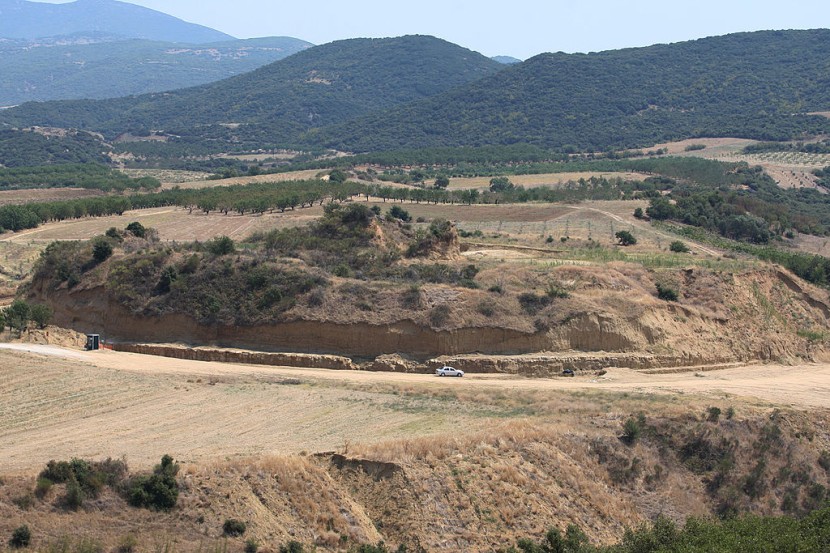
Underneath a burial mound, Laona in Cyprus is the remnants of an older fortress found by archeologists working on the excavation. According to the Cyprus Department of Antiquities, a rampart and defensive wall were discovered beneath the earthen structures.
Fortress Under Burial Mound
The tumulus of Laona is the mound's name, which measures 328 feet by 196 feet and is thought to date back to the third century B.C.
According to Live Science, it was constructed by Alexander the Great's successors, who were vying for control of the empire at the time of his death.
Researchers have dug up the site and removed the tumulus in the past ten years. The discovery of a rampart that had been broken earlier, in 5 B.C., caught everyone off guard. That predated mounds by much more.
The ancient people of Cyprus built the tumulus on top of the fortress wall and covered it with 484,000 cubic feet of soil made of sand, silt, marl, and red soil brought from other places. The ancient fortress, buried beneath the Cyprian burial mound, was preserved in perfect condition since its northeast corner still stands at 20 feet.
The Department of Antiquities at the University of Cyprus said it is one of the most important monuments from the "Age of the Cypriot Kingdoms."
Laona megaliths are two ancient structures that are the most distinctive in Cyprian archaeology of the time, as evidenced by the discovery of the pertinent broken rampart of the old mega monument, according to a Facebook post from August 13.
Tumulus of Laona
It is situated 1 kilometer northeast of the Sanctuary of Aphrodite, an ancient structure constructed in the 12th century B.C.
Giorgos Papantoniou remarked that although the mound and tumulus were always visible, they were perceived as a natural hillock. He is not associated with the excavation and is an assistant professor of ancient visual and material culture at Trinity College, Dublin. He added that it was confirmed in 2011 to be a man-made mound.
The study, which described how the structure was constructed over several stages, was published in the journal Geoarchaeology in 2021.
Paphos was ruled as a royal dynasty until the end of the fourth century B.C., which embodies the Cypro-Classical design.
The palace and workshop structures on the citadel of Hadjiabdoulla, which are located only 230 feet apart from Laona, are operationally similar to and fit the same timeframe as the wall, based on the archaeologists.
The antiquities team recently conducted an excavation that revealed the east side of the rampart as well as two ancient stairwells. The rampart started to turn north underneath the highest point of the mound, about even further analysis. Its border fence follows a downward, northwesterly course, and both are in good condition.
According to investigations at the wall's base, the project was probably started by ancient people leveling the ground. On top of this leveled ground is a thick layer of river pebbles and a layer of red soil containing sherds or broken pieces of pottery.
Tumuli were built using local materials, according to Papantoniou, but since no ancient Cypriot tumulus builders have been identified, the engineers who had the necessary skills must have been from another country, possibly Macedonia.
Archeologists are investigating the Cyprian burial mound and the older fort under it; more research is needed to know more about who made it and who lived there.
© 2026 HNGN, All rights reserved. Do not reproduce without permission.







